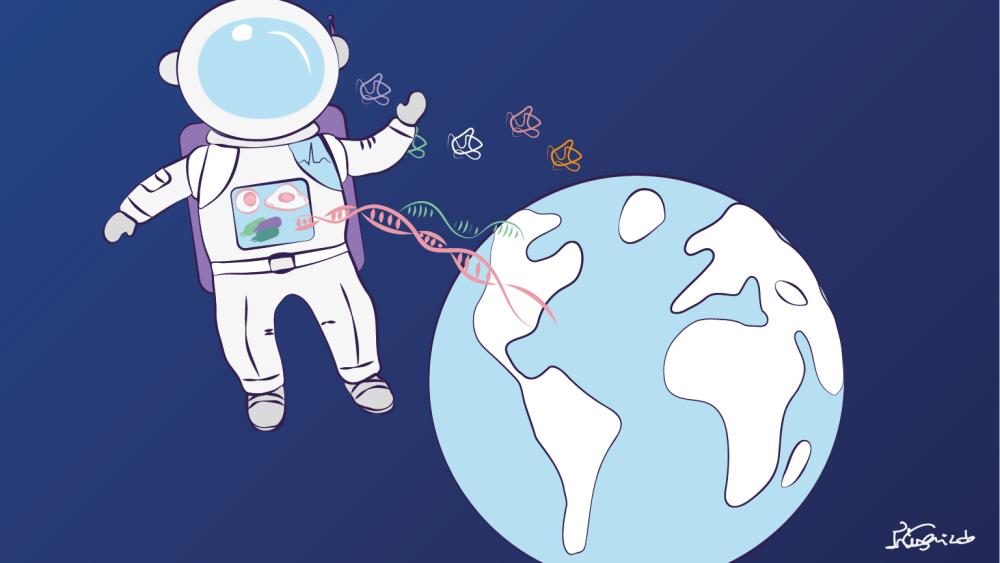On 16 September 2021, the first human spaceflight with an entirely civilian crew, Inspiration4, was launched into low Earth orbit from the Kennedy Space Center. The mission ended three days later, on 18 September 2021, giving the crew a chance to experience similar conditions to those on the International Space Station (ISS). This included exposure to ionising radiation, living in a vacuum and the challenges of a closed, hostile environment, along with isolation and limited Earth resources. However, it also presented scientists with a remarkable opportunity to conduct research on the biological and behavioral responses of non-professional astronauts during the early phases of spaceflight. The ambitious goal was to gather biological and cognitive data to create a comprehensive database that could inform future crew selection and mission planning.
At this point, you might wonder why we do not possess this data, given that we have been sending people to space since the early 1960s. The truth is, while we have a wealth of knowledge regarding the effects of living in space on the human body, much of this information comes from studies involving professional astronauts – individuals who have been rigorously selected and trained for years to cope with the unique challenges of space travel. If you are curious about life in space, the fearless Mary Roach (https://www.goodreads.com/book/show/9542311-packing-for-mars) answers all the questions you have ever wanted to ask but might have been to shy or embarrassed to say out loud. Wondering how to handle basic (and maybe not-so-basic) physiological needs in microgravity? You will find your answers there. Trust me, once you read it, you will be ready to start saving for a ticket on one of those zero-gravity commercial flights, just for the experience. It is highly recommended for everyone, especially aerospace enthusiasts.
With the advent of space tourism in 2001, our focus shifted towards civilians. Although the sample size was very small—only four crew members—this group was already well-gender balanced, comprising two females and two males. They were equipped with novel flight technologies, such as handheld ultrasound imaging devices and Apple Watches (yes, you read that correctly!). While the original article does not specify whether the crew members were allowed to keep their watches after the spaceflight study, they also employed new protocols for analysing gene and protein expression, as well as cellular and immune system function.
As expected, the three-day stay in the void induced a broad spectrum of physiological and stress responses, evident in changes to gene and protein expression and immune system function, alongside space motion sickness. Notably, cognitive ability remained largely unaffected. Interestingly, most examined factors did not differ from the pre-flight state upon their return to Earth, leading scientists to conclude that a short-term stay in space does not pose any major health risks. What is even more intriguing – yet perhaps expected – is the reported increase in happiness and decrease in boredom among the civilian astronauts during their flight compared to their pre-flight state.
Given the small sample size, all the collected data are very preliminary. However, as more civilians venture into space, we will gather additional insights into the physiological and cognitive responses of non-professional astronauts to life in space. Fingers crossed for all future space tourists! Let’s hope that one day, some of us will have the extraordinary opportunity to witness 16 sunsets and sunrises in a single Earth day while floating among the stars.
References:
1. Jones, C.W., Overbey, E.G., Lacombe, J., Ecker, A.J., Meydan, C., Ryon, K., Tierney, B., Damle, N., MacKay, M., Afshin, E.E., et al. (2024). Molecular and physiological changes in the SpaceX Inspiration4 civilian crew. Nature 632, 1155-1164. 10.1038/s41586-024-07648-x.
2. Overbey, E.G., Kim, J., Tierney, B.T., Park, J., Houerbi, N., Lucaci, A.G., Garcia Medina, S., Damle, N., Najjar, D., Grigorev, K., et al. (2024). The Space Omics and Medical Atlas (SOMA) and international astronaut biobank. Nature 632, 1145-1154. 10.1038/s41586-024-07639-y.


gmax
Hello there, You’ve done a fantastic job. I will certainly digg it and personally suggest
to my friends. I am sure they will be benefited from this website.
Blue Techker
Blue Techker You’re so awesome! I don’t believe I have read a single thing like that before. So great to find someone with some original thoughts on this topic. Really.. thank you for starting this up. This website is something that is needed on the internet, someone with a little originality!